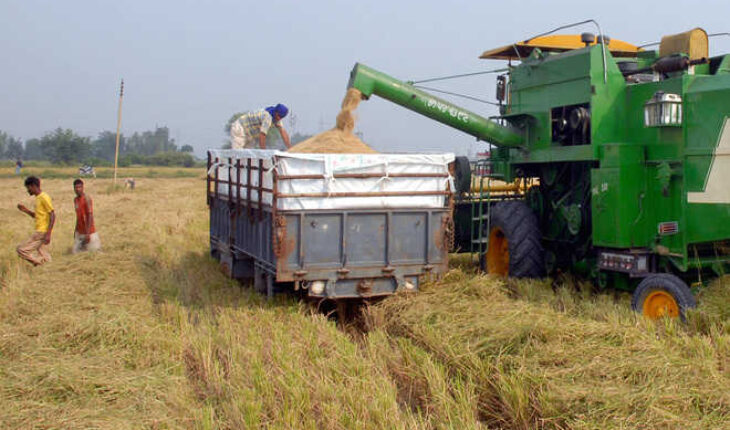Faulty Combine Harvester machines leave stubble in the fields which becomes a hurdle to the farmers and they prefer to burn it then and there instead of spending huge money to shift the crop residue to other places. The problem of smog in Delhi NCR can be reduced by improving these Combines.

Delhi NCR has been struggling with the problem of smog for more than a decade. Earlier, the Capital took some positive steps to curb air pollution, which included shifting to CNG vehicles, Metro trains and other measures. Air pollution in Delhi is becoming deadly these days. When deaths were occurring on the spot due to COVID-19, everyone was concerned, whereas air pollution kills slowly; hence it gets ignored by people and the governments. Not only the ruling party, but even the Opposition parties ignore this crucial issue.
Moreover, governments are promoting complex and impractical solutions and ignoring simple methods. On the other hand, the common public is unaware that due to its own acts, the crisis is growing year by year. All of us are responsible for deteriorating air quality and expect the governments to do some magic to end the problem.
The act of stubble burning in the neighbouring states causes ten times more smog in Delhi NCR in just two months than automobile-induced air pollution in a year. Burning of paddy straw in the fields gives rise to smoke, which reaches the Capital with north-westerly winds and worsens the condition of the region. After all, why do farmers burn stubble, especially farmers of Punjab? Actually, Combine Harvester machines are widely used there to harvest the paddy crop. There is a major shortcoming in these machines made in India due to which the problem of stubble arises. These machines cut the grainy part of the paddy plant and leave the remaining stem in the field. This straw or stubble itself becomes a problem for the farmers.
Nowadays, farmers rear less cattle, so they do not have much need for fodder. It is a costly affair for them to dispose of stubble from the fields. To get rid of this, they set fire to the stubble in the fields itself. Therefore, the problem lies in the poor design of the indigenous Combine Harvester machines. If these machines cut the entire paddy plant from the field and make straw bundles, then the problem can be solved easily. Unfortunately, neither the government nor the public has paid attention to this angle. That is why Delhi starts sighing every year in November and December.
Another problem is the mishandling of the issue by the people in power. The government offers subsidies on machines which are expensive and inadequate to solve the issue of stubble burning. Also, these subsidised machines do not match traditional farming practices, so most farmers are not interested in them. Secondly, despite getting subsidies, these machines are expensive for the farmers. They prefer burning the stubble to prepare their fields for the next crop. The incidence of stubble burning in the fields of Punjab is more than 60 percent, whereas in Haryana this figure is much less.
Meanwhile, the Delhi Government has started taking some measures to curtail air pollution in the Capital city by implementing the Odd-Even scheme, banning diesel vehicles from entering the city, and other curbs. It also planned to create artificial rain over Delhi with the help of IIT Kanpur scientists. Artificial rain or cloud seeding is a weather modification technique, in which silver iodide is released into the atmosphere to aid the formation of ice crystals and improve the ability of clouds to create rain.
…
The writer is the COO of India Book of Records. Views are Personal. Email: narvijayindia@gmail.com




